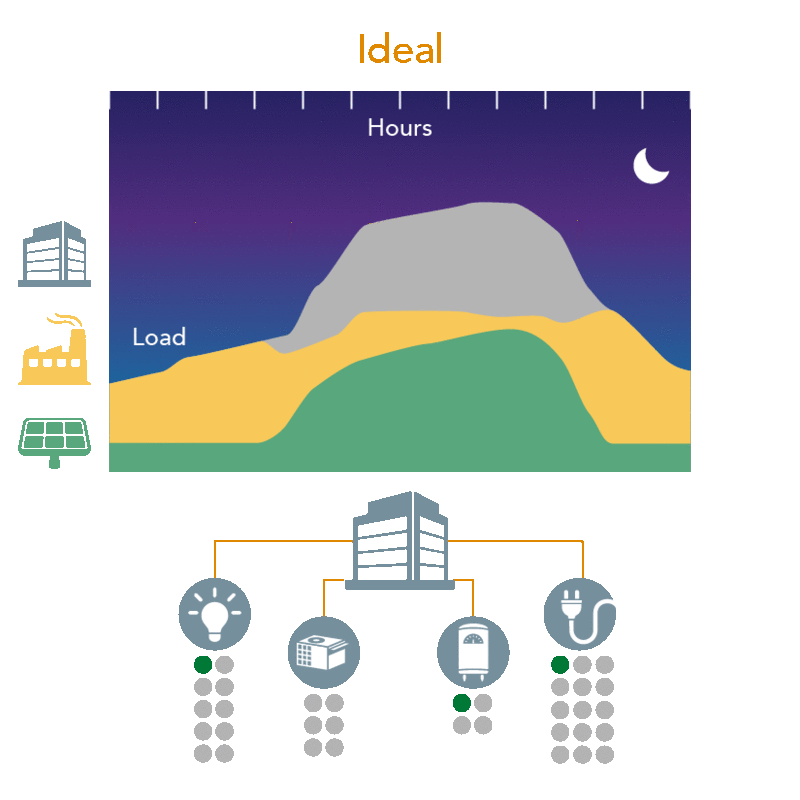CHALLENGE
With significant growth in renewable energy resources, power generation is becoming more intermittent and distributed. And millions of smart sensors and meters are turning traditional, one-way electricity delivery into a two-way "transactive" information-packed power grid. Transactive control methods can seamlessly engage buildings, the power system and renewable energy resources for greater energy efficiency and flexibility.
SOLUTION
Researchers from Pacific Northwest National Laboratory, the University of Washington, and Washington State University are collaborating to develop and test transactive control technologies and approaches, using the VOLTTRON™ distributed energy and control platform. This project is also creating a clean energy test bed in Washington State. Phase 1 results follow.
- In one experiment, PNNL deployed transactive control algorithms across 10 of its buildings to identify equipment issues, correct problems, and improve building operations. Results indicate that the algorithms successfully identified operational faults.Three other PNNL experiments were successful in: managing peak electricity loads in three buildings, demonstrating prioritization of heat pump operations during peak times; creating markets within different building zones and devices as part of an automated, real-time process; and commanding a building’s supply fan to track and adjust to solar production and its intermittency.
- UW equipped campus photovoltaic arrays with smart inverters to control voltage at the grid connection point across three campus locations. They also acquired and installed a 100-kW battery energy storage system, which will operate as a flexible demand and transactive resource.
- WSU is integrating solar energy and storage with the city of Pullman and the university’s microgrid, and developing strategies for sharing energy between university building loads and solar modules. They installed a 72-kW solar photovoltaic system, made up of 243 modules and grid-tied inverters, as ground- and roof-mounted arrays at the university’s Research and Technology Park, with VOLTTRON™ integrated into the system.
BENEFIT
Building on these accomplishments, Phase II will implement the PNNL experiments at the partner campuses and expand to include new partners Case Western Reserve University and the University of Toledo. Deploying and demonstrating transactive technologies at scale sets the table for significant energy savings as well as increased ability for integrating distributed energy resources, such as solar panels and battery storage.
Related Projects
-
Clean Energy and Transactive Campus
Pacific Northwest National Laboratory (PNNL) is teaming with Washington State University (WSU) an


